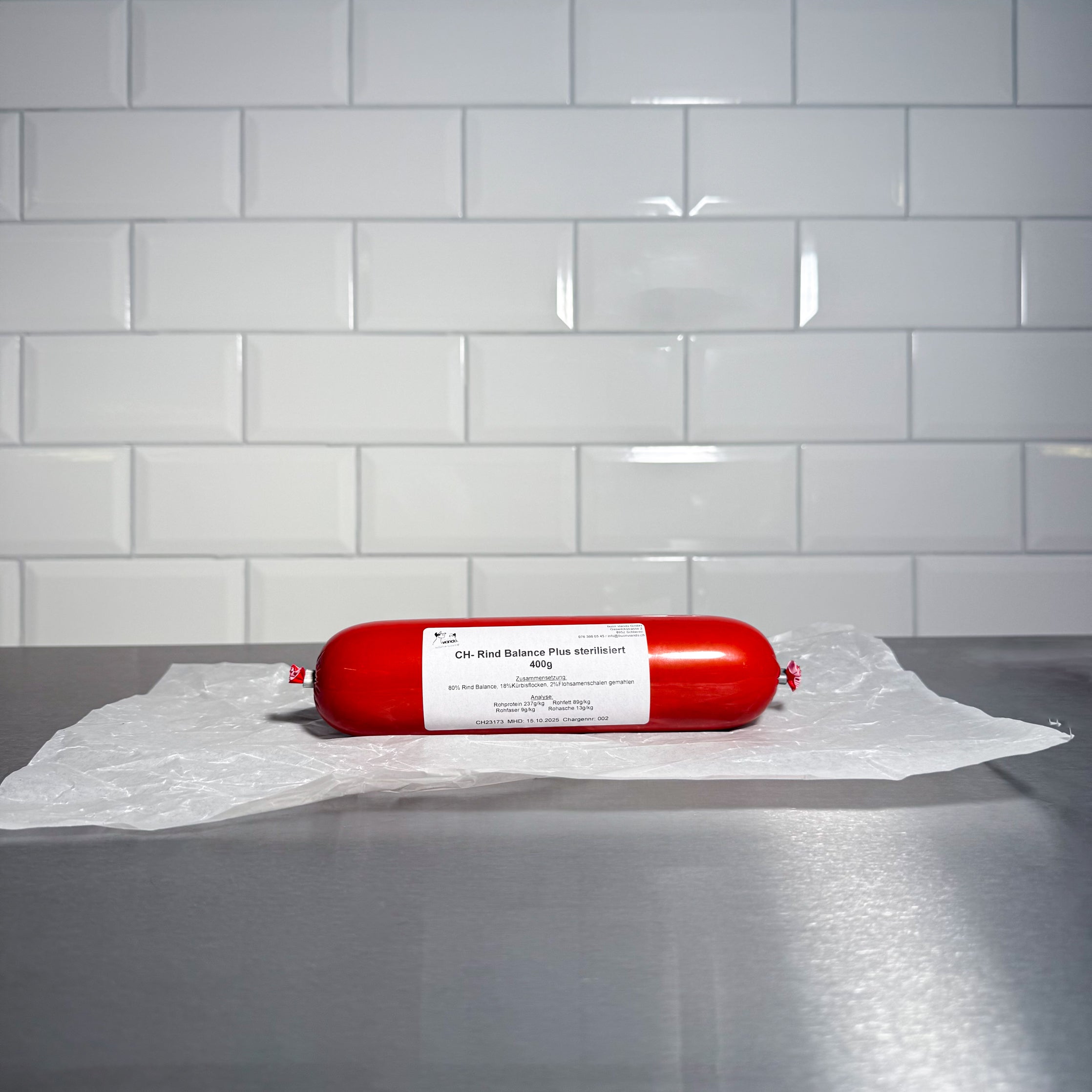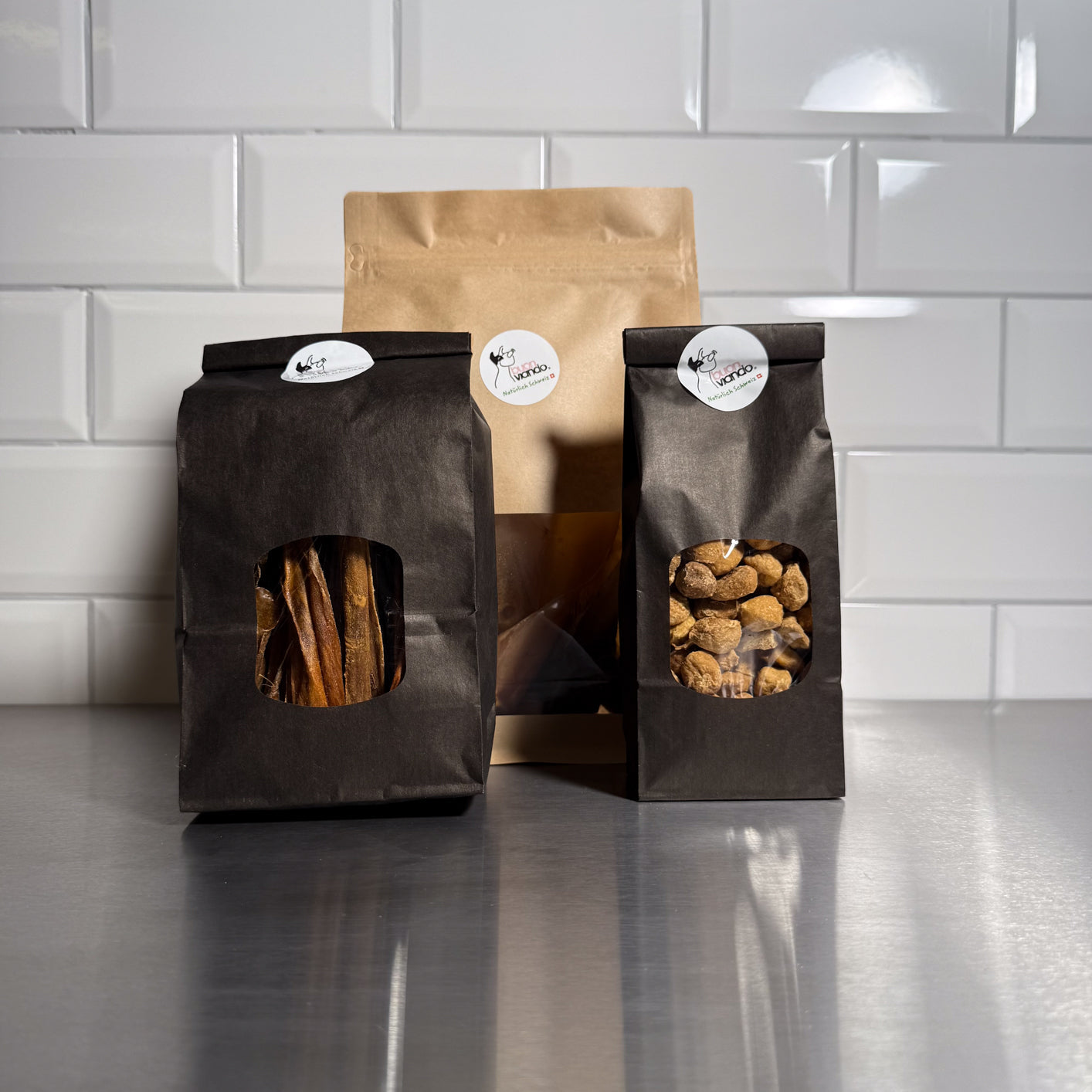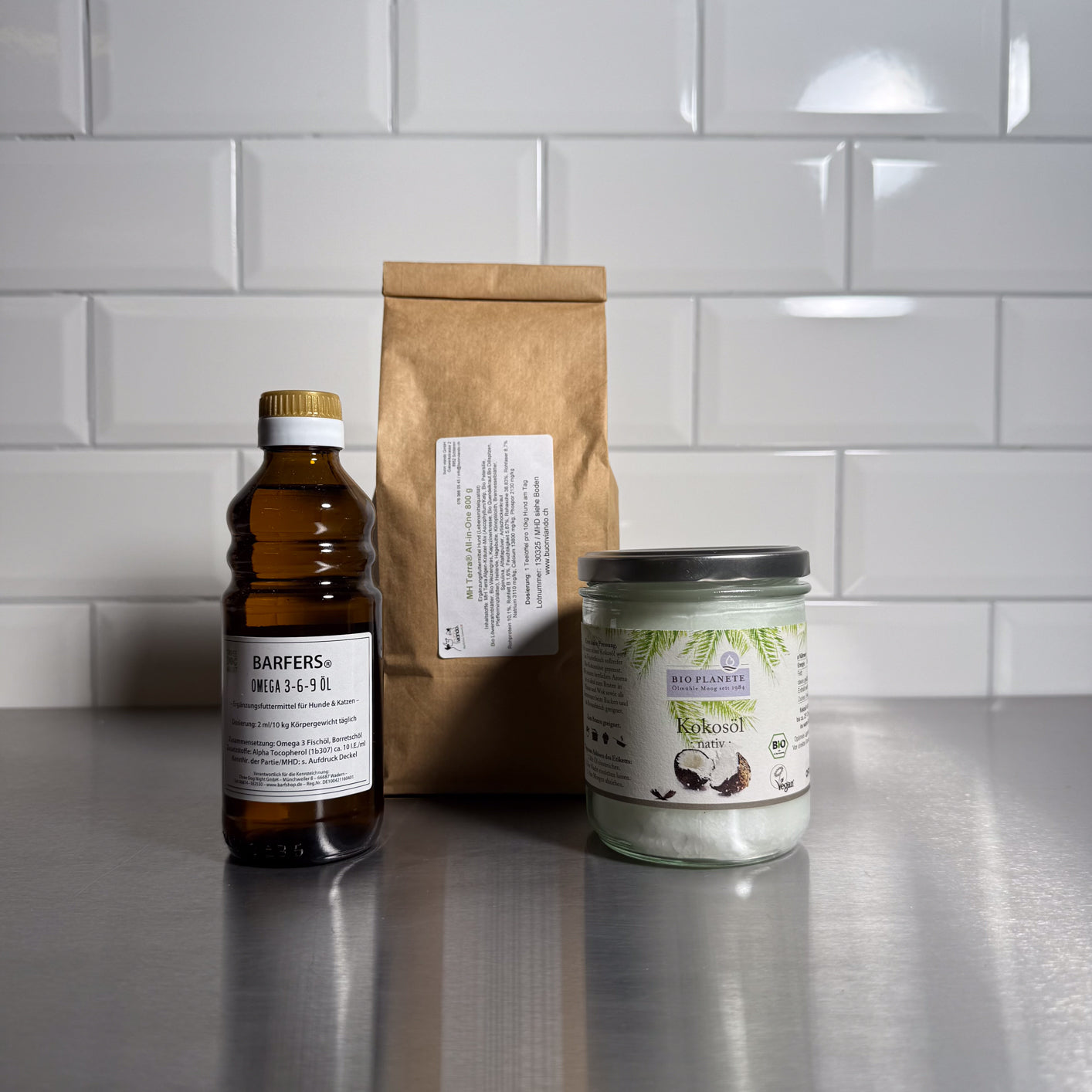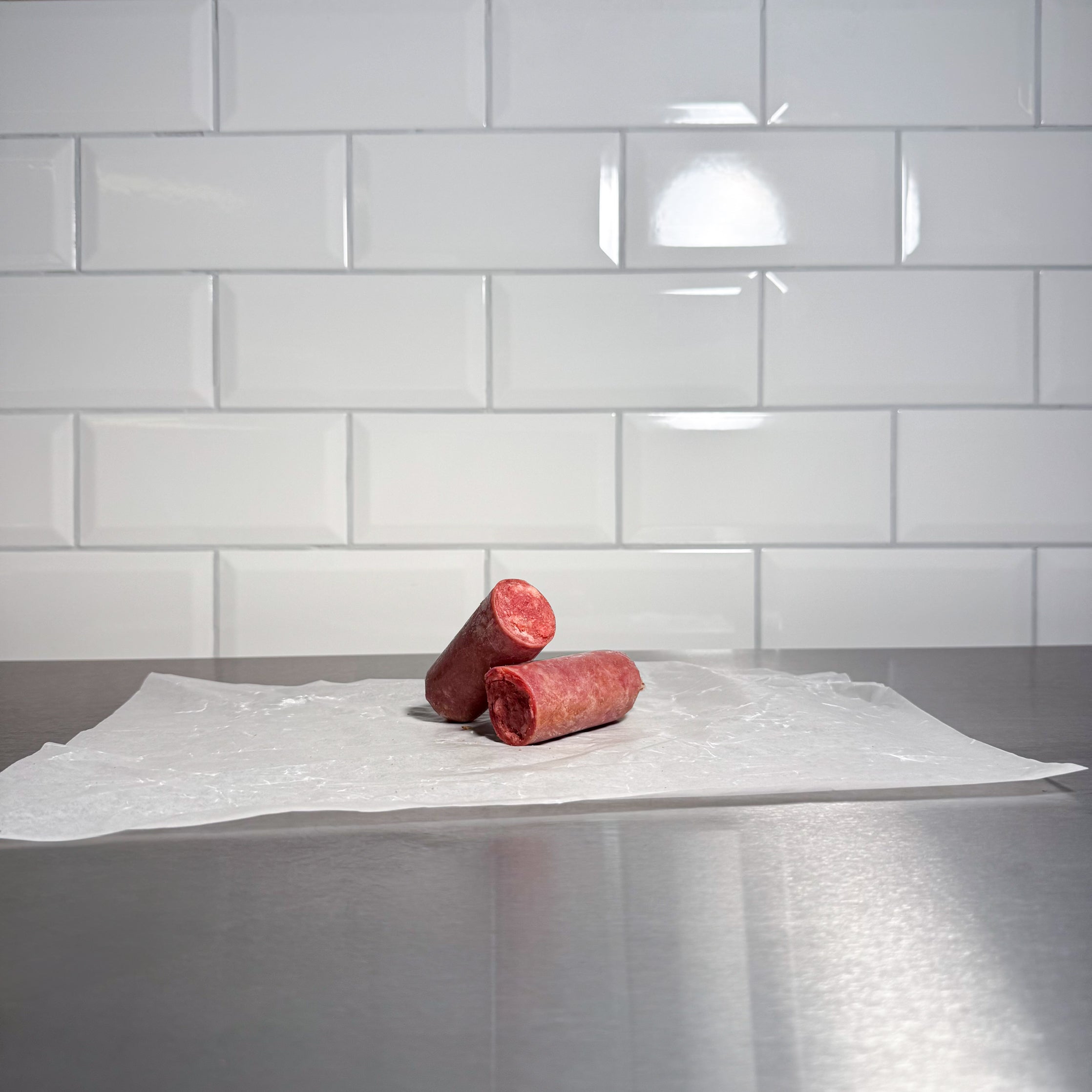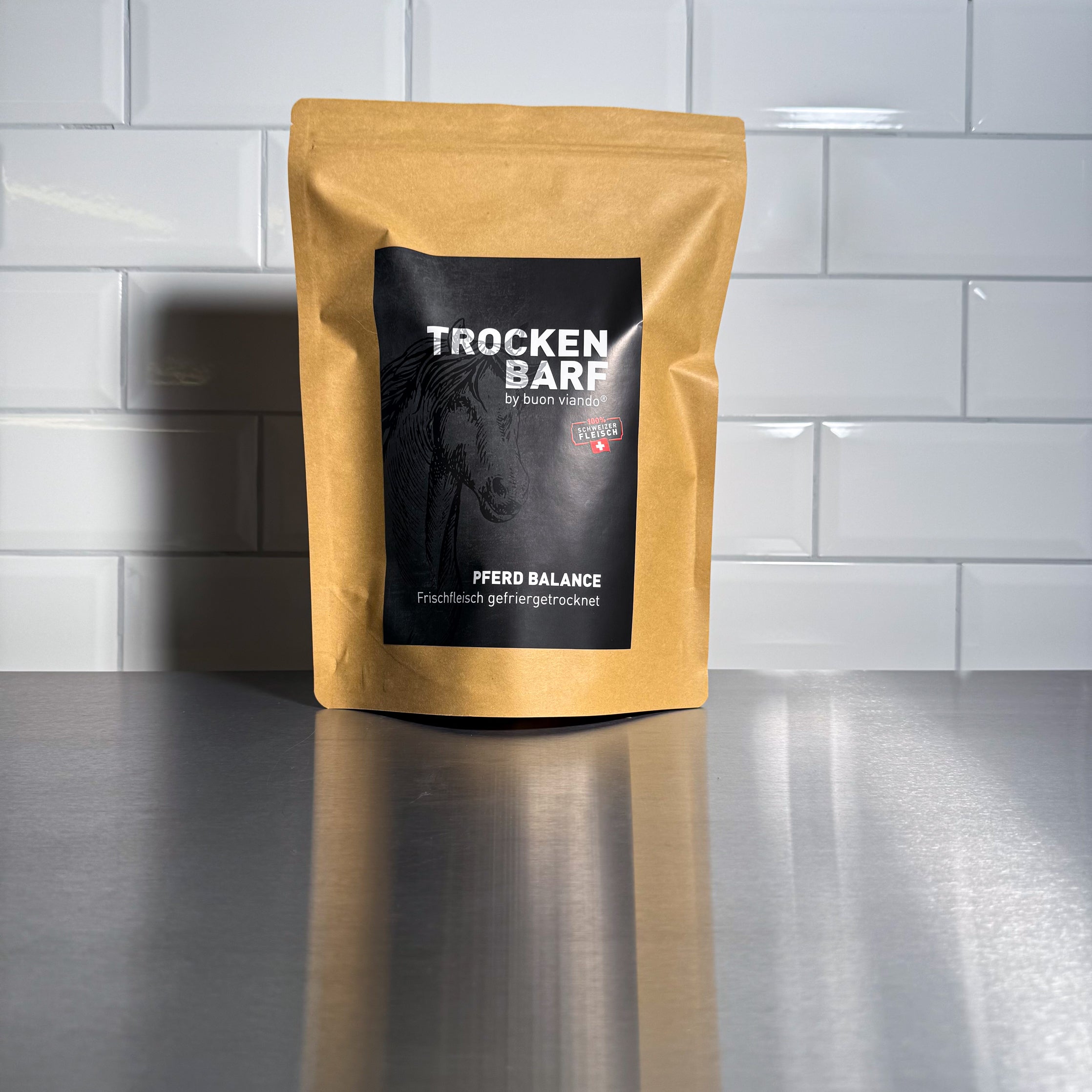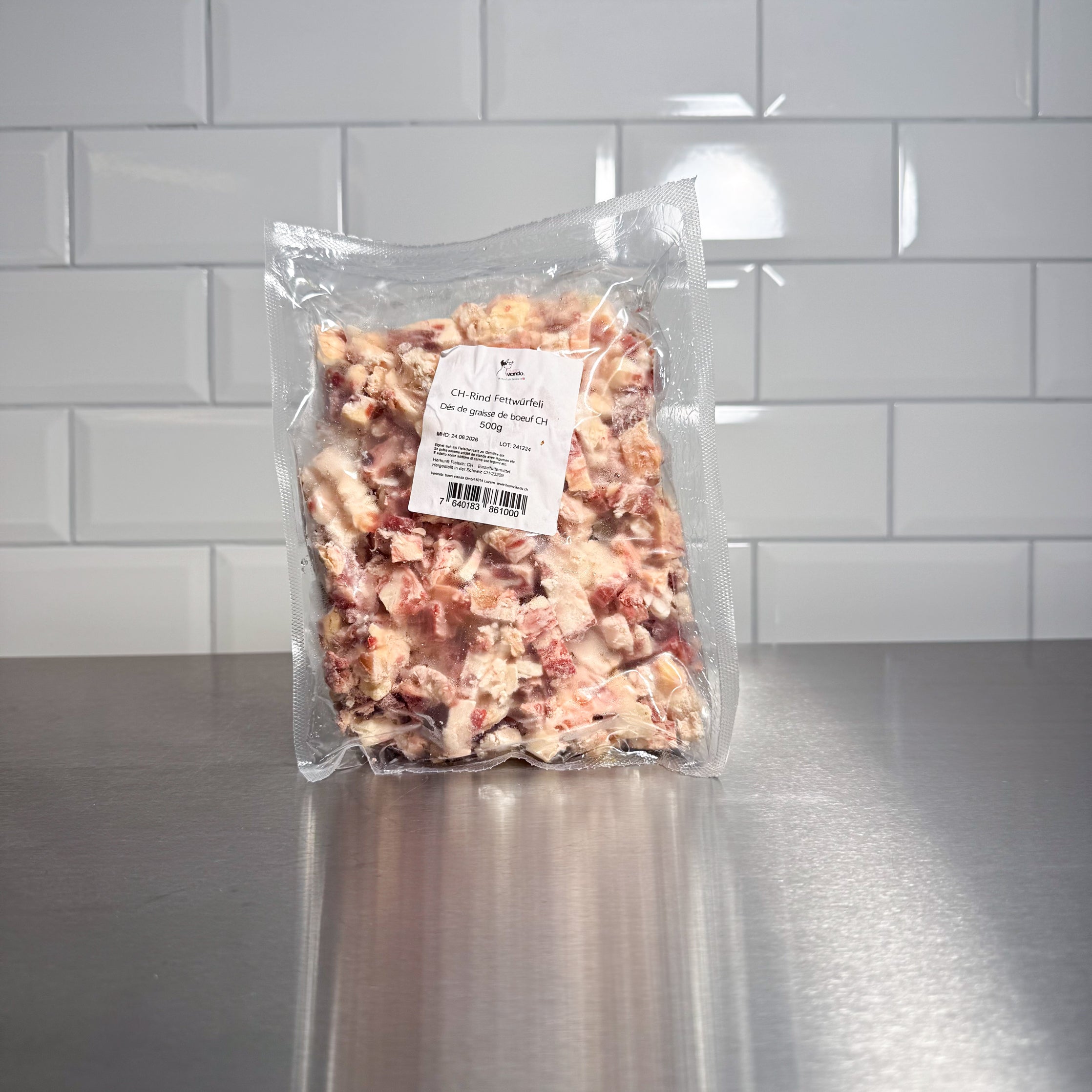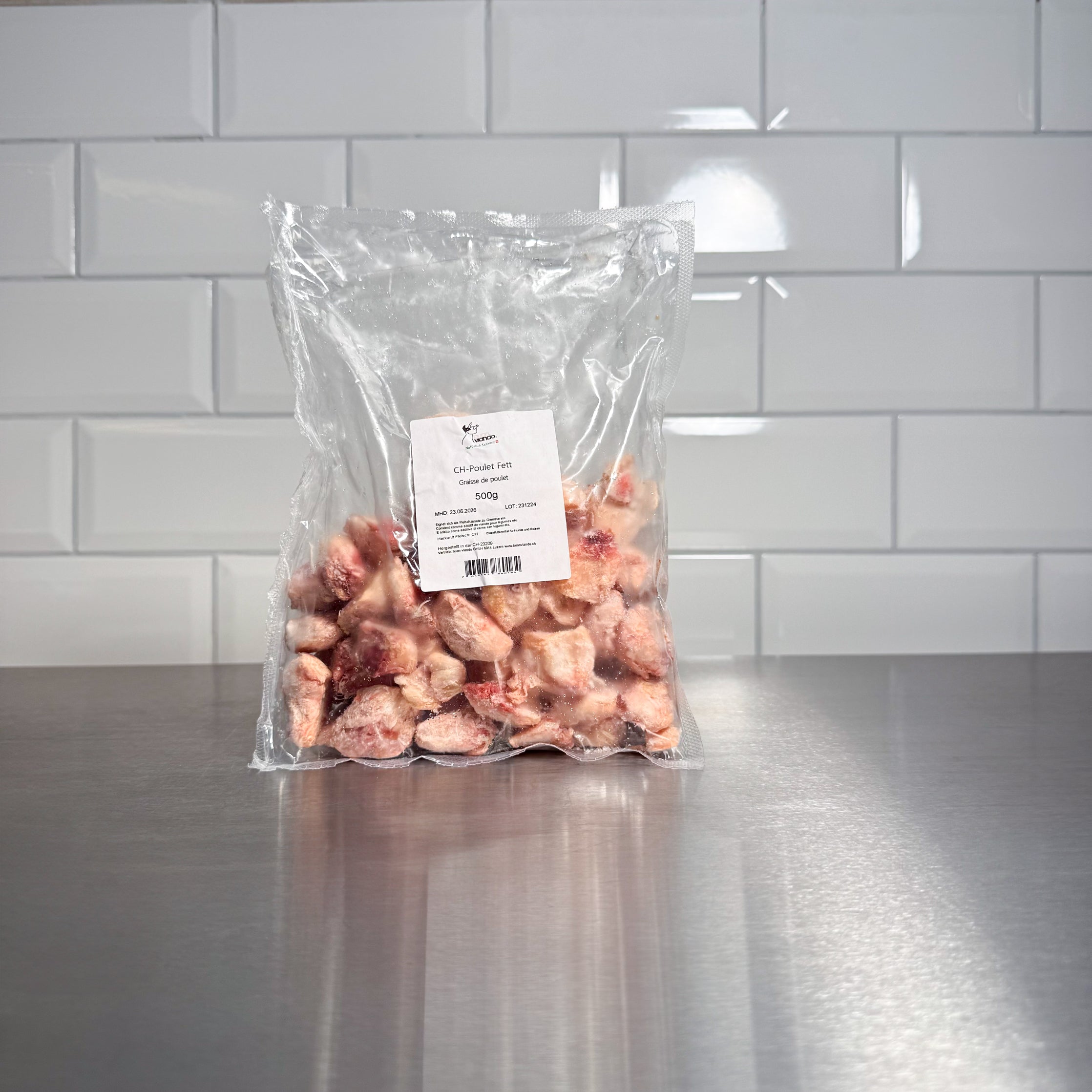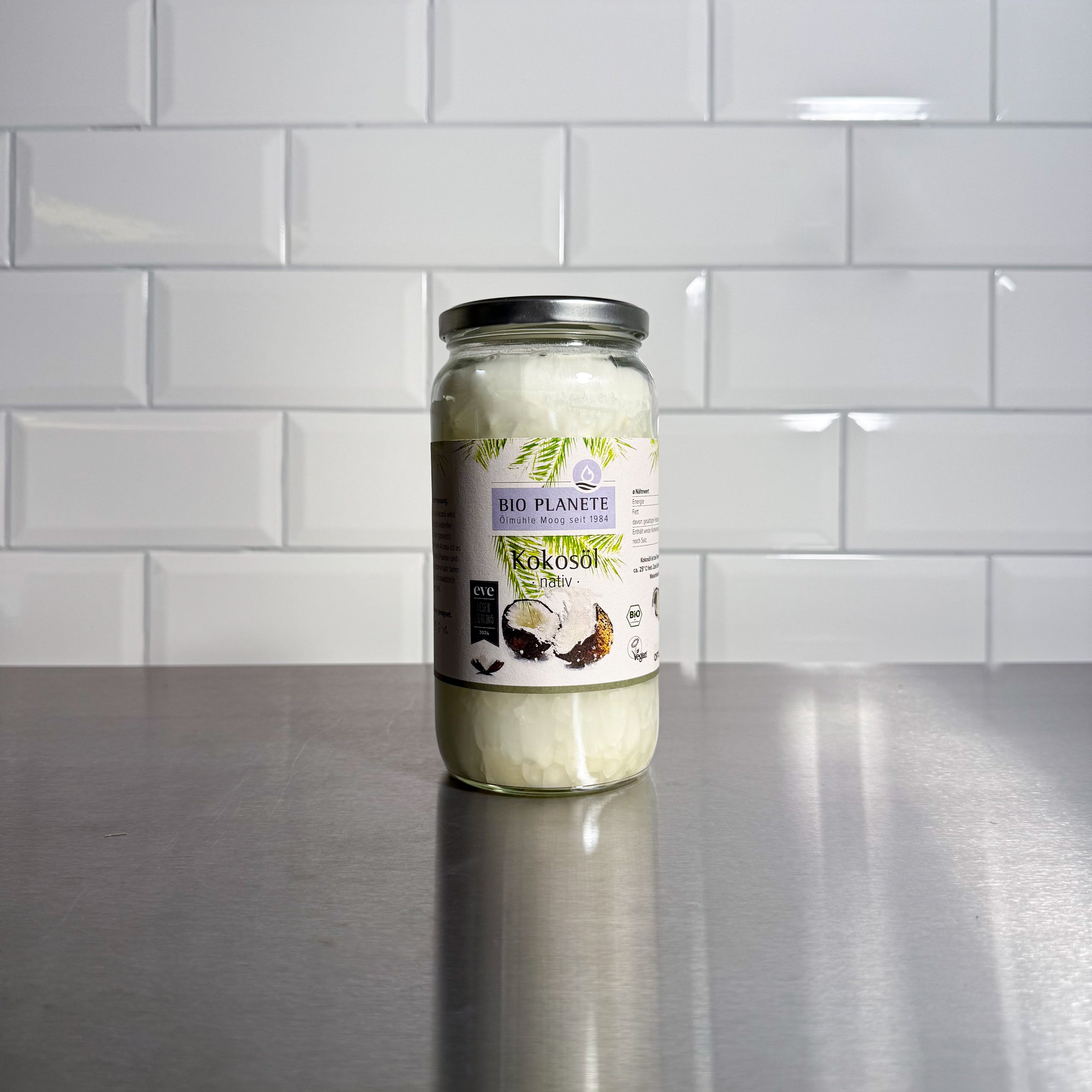Fat in Dog Food: Why Animal Fat Is Essential!
Many dog owners rely on lean meat for raw feeding, because unfortunately, fat still has the bad reputation of making dogs fat. But for dogs, fat is an essential source of energy! Those who feed their four-legged friends meals that are too low in fat not only risk weight loss and constant hunger, but also health problems such as liver and kidney damage.
Why is fat so important?
Dogs get their energy primarily from fat. Unlike humans, who rely on carbohydrates as their primary energy source, dogs are specialized in optimally utilizing fat. The benefits of fat in dog food are manifold:
- Primary energy source: Fat provides more than twice as much energy as proteins or carbohydrates (9.3 kcal/g vs. 4.1 kcal/g).
- Digestibility: Dogs can easily utilize fat and absorb it in large quantities.
- Skin & Coat: Essential fatty acids promote a healthy, shiny coat.
- Satiety: High-fat meals provide long-lasting satiety without placing unnecessary strain on the stomach.
- Avoiding excess protein: If too little fat is fed, the dog must obtain energy from proteins, which puts a strain on the liver and kidneys.
Animal fat vs. oils – What's the difference?
Animal fat and vegetable oils are not the same!
- Animal fat: The main energy source for dogs, contains important saturated fatty acids and fat-soluble vitamins.
- Vegetable oils: Contain unsaturated fatty acids, especially omega-3 and omega-6, which have anti-inflammatory effects and support the immune system.
- The exception: Coconut oil
- Coconut oil is the only vegetable fat that plays a special role. Unlike other vegetable oils, it consists primarily of medium-chain fatty acids (MCTs), which are quickly utilized by the body and serve directly as an energy source. Coconut oil is also said to have a natural, mild tick-repellent effect.
But: Coconut oil is not a substitute for animal fat!
It should only serve as a small supplement and not replace the entire fat source in the food. A balanced BARF plan is based on animal fats, as dogs can utilize them much better than vegetable fats.
A balanced BARF ration contains both! Animal fat provides the necessary energy, while high-quality oils – and in moderation, coconut oil – should be fed as a supplement to optimize the fatty acid profile.
How much fat does a dog need?
On average, the fat content in a dog's muscle meat should be 15-25%. Special needs require adjustments:
- Athletic dogs: Up to 30% fat in muscle meat
- Puppies: Approx. 15% fat
- Nursing bitches: 30-35% fat
- Senior dogs: Adapted depending on activity level
If the meat is too low in fat, you can add animal fat, such as beef or chicken fat.
Fat in Practice: How to Feed Properly
If you're suddenly switching your dog to a higher-fat diet, you should increase the amount of fat slowly so their metabolism can adjust. Start with small amounts and observe how your dog reacts.
Tips for fat intake:
- Feed well-marbled muscle meat or add fat cubes.
- Replace some of the lean meat with fattier meat (e.g., beef instead of chicken).
- Coconut oil is occasionally a tasty source of energy.
But be careful: Overweight dogs don't need additional fat – in these cases, the total amount of food should be adjusted.
Conclusion
Fat is not an enemy, but an essential component of a dog's diet. It provides sufficient energy, a healthy coat, and relieves stress on the organs. Animal fats should make up the majority of the fat source in the bowl, while vegetable oils are useful as a targeted supplement. If you want to feed your dog a natural and species-appropriate diet, you shouldn't be afraid of fat – because a dog fed a lean diet is not automatically a healthy dog!


